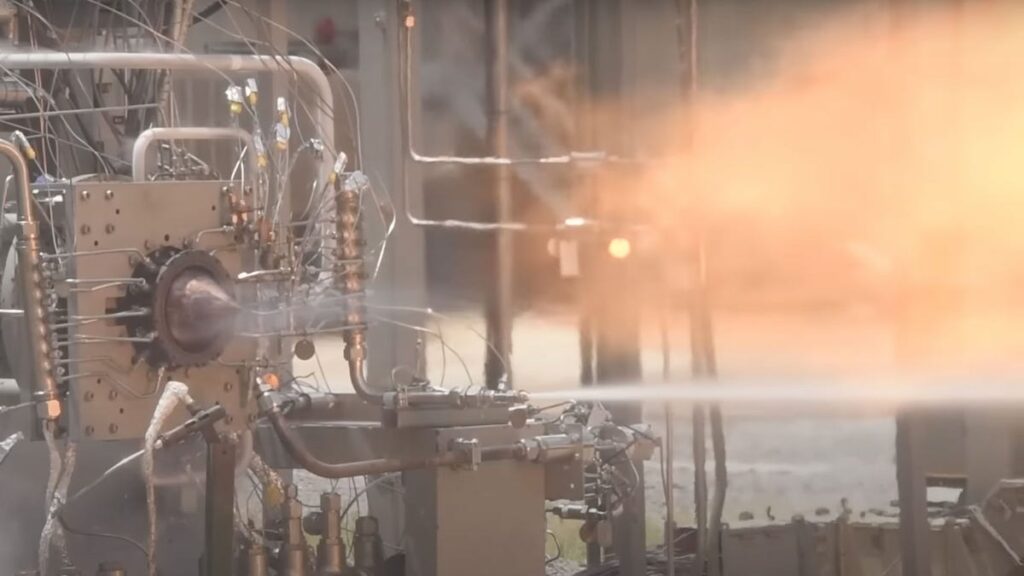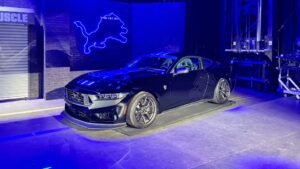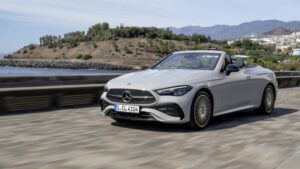Watch NASA Test a 3D-Printed Rocket Engine Made for Deep Space Travel

Ever wondered what a rotating detonation rocket engine looks like? Gif: NASA
It’s a pretty exciting time to be a space nerd right now. Agencies around the world recently came together to launch the most advanced telescope ever into orbit, startups are promising increasingly sci-fi means of traveling into orbit and NASA is hard at work getting humans back to the moon. That mission took a step closer to reality recently, when the American space agency began testing the rocket that could get us there.
For the past few months, NASA has been testing out an innovative new engine that produces more power than traditional rocket engines, while using less fuel. Called a rotating detonation rocket engine, or RDRE, the new engine could hold the key to the agency’s ambitions for deep space travel.
Rocket engines have stayed pretty much the same for as long as there’s been space travel. There’s a combustion chamber where fuel is ignited, and a nozzle that directs the exhaust gasses and energy in the opposite direction from wherever you want to go.
But the RDRE, which was first proposed in the 1950s, works quite differently. Instead of using combustion to burn fuel and change chemical energy into heat energy, a RDRE uses detonation to speed up the energy transfer without the need for oxygen to keep the fire burning.
Rotating Detonation Rocket Engine Test at Marshall Space Flight Center
This kind of engine can also extract more energy from its fuel, and doesn’t require a separate oxygen tank to support combustion in the vacuum of space. Aspects like this make this more powerful, more efficient engine ideal for lengthy space missions.
G/O Media may get a commission
Grow those luscious locks back
This proprietary, prescription-grade topical Finasteride is proven to regrow hair in just a few months.
But RDRE engines are notoriously tricky to build, and scientists around the world have been working to optimize this type of engine for space travel (and even high-speed air travel) for decades. Now, NASA has successfully tested its own RDRE, which could one day power us to the moon and further into space.
The test saw NASA engineers mount a prototype engine to a rig at the Marshall Space Flight Center in Huntsville, Alabama. There, the engine was fired “over a dozen times, totaling nearly 10 minutes in duration,” said NASA in a press release.
From the sounds of it, the test was a success. According to NASA’s release, engineers found that the prototype engine “could operate for long durations while withstanding the extreme heat and pressure environments generated by detonations.”
While turned up to 11, the prototype RDRE produced more than 4,000 pounds of thrust for nearly a minute. Pressure inside the engine also reached 622 pounds per square inch, which NASA says is the “highest pressure rating for this design on record.” Impressive stuff.
The new engine could revolutionize space travel. Photo: Paul Hennessy/Anadolu Agency (Getty Images)
But while those performance figures all sound mighty impressive, perhaps the most fascinating thing about this prototype motor is how it’s made. NASA manufactured the whole thing using “novel additive manufacturing,” which is a fancy way of saying 3D printing. This means that one day, we could repair and replace parts for an engine like this anywhere there’s access to a 3D printer — including on a space station.
The next step in the process of proving the usability of this 3D-printed rocket engine will be in scaling up. NASA says it’ll take everything it’s learned from these tests to develop a “fully reusable 10,000-pound class RDRE,” to uncover any benefits over a traditional rocket engine.
That’ll be a step in the right direction, but given the fact that the most powerful engines out there today kick out more than 200,000 pounds of thrust, there’s still a way to go yet.





